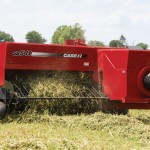Are You Ready to Make Hay While the Sun Shines?
go.ncsu.edu/readext?353431
en Español / em Português
El inglés es el idioma de control de esta página. En la medida en que haya algún conflicto entre la traducción al inglés y la traducción, el inglés prevalece.
Al hacer clic en el enlace de traducción se activa un servicio de traducción gratuito para convertir la página al español. Al igual que con cualquier traducción por Internet, la conversión no es sensible al contexto y puede que no traduzca el texto en su significado original. NC State Extension no garantiza la exactitud del texto traducido. Por favor, tenga en cuenta que algunas aplicaciones y/o servicios pueden no funcionar como se espera cuando se traducen.
Português
Inglês é o idioma de controle desta página. Na medida que haja algum conflito entre o texto original em Inglês e a tradução, o Inglês prevalece.
Ao clicar no link de tradução, um serviço gratuito de tradução será ativado para converter a página para o Português. Como em qualquer tradução pela internet, a conversão não é sensivel ao contexto e pode não ocorrer a tradução para o significado orginal. O serviço de Extensão da Carolina do Norte (NC State Extension) não garante a exatidão do texto traduzido. Por favor, observe que algumas funções ou serviços podem não funcionar como esperado após a tradução.
English
English is the controlling language of this page. To the extent there is any conflict between the English text and the translation, English controls.
Clicking on the translation link activates a free translation service to convert the page to Spanish. As with any Internet translation, the conversion is not context-sensitive and may not translate the text to its original meaning. NC State Extension does not guarantee the accuracy of the translated text. Please note that some applications and/or services may not function as expected when translated.
Collapse ▲Hay season is just around the corner. If you haven’t already, now is the time to pull out the equipment and get it ready for the hay field. Following preventative maintenance suggestions can reduce stress from downtime and ensure safe working conditions. Consider these practices when completing maintenance:
- Replace broken or worn parts to feed material properly into the bale chamber.
- Replace bent or loose blades on rotary cutters that are more prone to thrown objects.
- Ensure proper clearance between crimping rollers on mower conditioners.
- Do not overlook lubrication. Even though you may have greased all bearings and shafts thoroughly at the end of last season, pump in fresh grease now. This will force out all the moisture which may have condensed inside during the winter. Wipe all grease fittings clean before applying grease gun; otherwise you may force dirt directly into the bearing along with grease.
- Always lubricate sprockets and chains when the machine is turned off.
- Whether in the shop or out in the field, always ensure the PTO is disengaged and the engine shut off before dismounting to service or adjust the equipment.
- With mowers, square bales and all equipment, wait until all components have stopped moving before work occurs
- Always lock and block the rear gate of a baler if you must be underneath it.
- Be prepared for a fire. Carry a Class ABC fire extinguisher on ALL tractors. Ensure extinguisher are charged and in working order.
- Keep all shields and safety guards in place. Replace immediately after maintenance is complete (don’t wait until you are ready to go to the field).
- Consider removing dirt and debris with compressed air; water will cause rust and can reduce life of bearings and moving components.
- Check implement tires carefully. After several months of not being used, repairs may be necessary.
 Go over all your machinery and tighten bolts, nuts and cap screws that have worked loose. This simple precaution can prevent serious and costly damage.
Go over all your machinery and tighten bolts, nuts and cap screws that have worked loose. This simple precaution can prevent serious and costly damage.
Regular maintenance and care extends the life of your equipment and maintains the value. An ounce of prevention is worth a pound of cure




